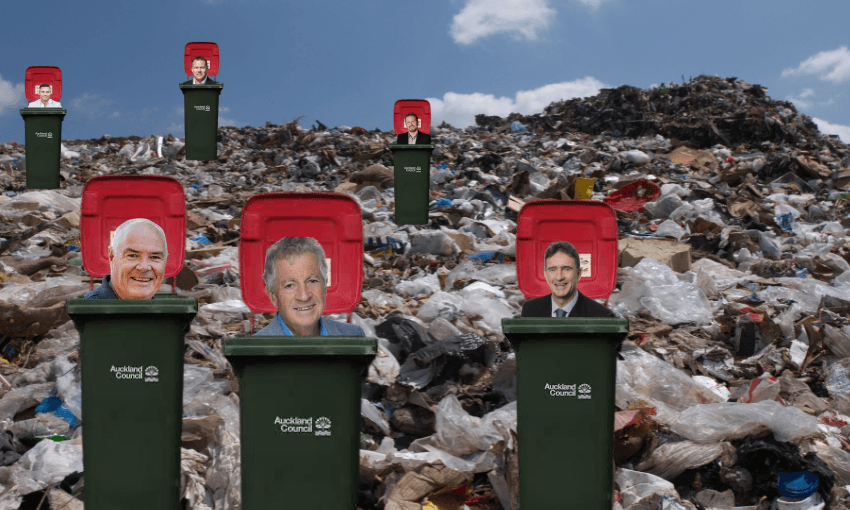At midnight on Tuesday, the next phase of the government’s response to the omicron outbreak kicks in. Here’s what that means.
Wait, I thought we were in red? What happened to the traffic light system?
Yes, we’re still in red. The traffic light system (Covid-19 Protection Framework) remains.
So we’re going to level two, like the good old days of the alert level system?
Certainly not. The alert level system remains kaput.
I see. So… what is this phase two of which you speak?
Glad you asked. Back at the end of January, a few days after it became clear omicron was circulating in the community, the government announced a new three-phased approach to dealing with the pesky variant.
At phase one, which we’ve been in up until now, the “stamp it out” approach was the modus operandi – essentially, following the same rule book we did for delta. Phase two means moving to “slow the spread” mode.
Hold on, ‘Stamp it out’ sounds suspiciously like ye olde elimination strategy. I thought we ditched that way back in ’21?
Elimination was “phased out” from October, when restrictions began loosening for Aucklanders despite rising case numbers.
In terms of the approach to omicron until now, suppression might be a better word than elimination. “Our objective is to keep cases as low as possible for as long as possible to allow people to be boosted and children to be vaccinated without omicron being widespread,” is how the government put it.
Right. So this move to phase two can be seen as the absolutely final, no-more-chances, all-elimination-must-go deathblow to the elimination strategy?
Pretty much.
How do things actually change?
Phase one has meant the same contact-tracing efforts, isolation and PCR testing requirements that have been the order of the day for much of the pandemic.
In phase two, the aim of the game switches to preventing a blowout, with the focus moving to vulnerable communities – those at greater risk of severe illness should they catch omicron – and critical workers, to keep those supply chains pumping.
In broader terms, the management of cases and contacts moves to a more automated, non-personal approach. Household contacts of cases will continue to be “actively managed” by contact-tracing services, but if you test positive, the news will be broken via text message rather than phone call, and you’ll be directed to an “online self-investigation tool” focusing on high-risk exposure, and then sent some information via email.
“Phone-based interviews will still take place where it’s required,” however.
In phase two, the isolation period for people who test positive shortens from 14 days to 10. Household contacts will also need to isolate for 10 days, the prime minister announced at a post-cabinet press conference this afternoon, and this can be served concurrently – which “removes the potential for people in the same household to have to isolate for long periods of time unless they test positive themselves”, Jacinda Ardern said. In recent weeks there has been criticism of household contacts of positive cases having to isolate for up to 24 days.
This decision was made based on research that shows 90% of household contacts who test positive do so in the first 10 days, said Ardern.
Close contacts who don’t live in the same household as a case will now have to isolate for seven days, a decrease from 10. This will also apply to arrivals from Australia when the border opens to them from midnight on February 28.
Is phase two where those RAT tests I keep hearing about come into play?
To an extent, but PCR testing will remain the go-to for symptomatic people and close contacts. Where rapid antigen tests make an appearance is in the close contact exemption scheme, AKA the “test to return” policy, whereby asymptomatic contacts in critical workforces can return a negative RAT to get the all-clear to go back to work, without the need to isolate. Today, Ardern said people who are part of the scheme will be able to pick up a pack of 10 RATs from their local vaccination centre.
If the labs get overwhelmed, the government’s official Covid website suggests RATs may get a wider rollout under phase two. “RATs will be integrated into our testing system at this phase and will work alongside PCR tests. They will be useful when the laboratories cannot provide PCR results within a useful timeframe because of large volumes or because of transport delays.”
Who’s considered critical?
Businesses can register online if they think they can meet the criteria, with sectors including food production and its supply chain, key public services like health and emergency services, lifeline utilities such as power and water supplies, transport, critical financial services, news media, social welfare, plus human and animal health and welfare. As of this afternoon, there have been 5,624 applications for the close contact isolation scheme.
Is there a phase three?
There is. It’s previously been said that we’ll move to it when cases are “in the thousands”, and in this afternoon’s press conference, Ardern indicated a 5,000 daily tally might be the threshold for change, but said “we’ll be keeping a watching brief on whether it needs to be sooner”.
For most people, the changes at phase three will be subtle, said Ardern: the definition of contact will move to household and “household-like” only, and those contacts will be notified by the cases themselves. RATs will be rolled out more widely.
Is there a phase four?
Mercifully no, and fingers crossed it stays that way.





